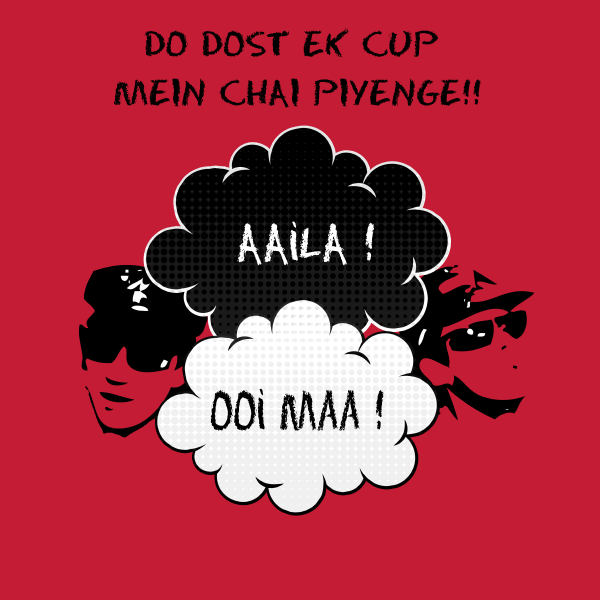Want To Make Your Brand DANK? Try Meme Marketing!
A determined-looking kid, dancing Drake, or Akshay Kumar in Phir Hera Pheri — what do they all have in common? Even if you don’t spend much time on social media, you are certainly not left untouched by the sway of these amateurishly made images decorated with amusing text.
Memes are truly everywhere, and brands are using it as a powerful tool for marketing and customer acquisition. And why won’t they? Given their engagement rate, memes have rapidly become a must-do in the world of online marketing.
What’s more, the audience can’t seem to get enough of it! After all, what’s better than scrolling through your social media feed and stumbling across a hilarious meme that perfectly encapsulates your current mood? The only difference is the brand that is trying to market its product or service.
So if you are yet to master this delicate art form that has become the language of internet culture, read on. Because this time we are exploring how you can use meme marketing to capture user attention, create buzz and ultimately drive sales!
First things first…What is Meme marketing?
Meme marketing is a marketing strategy that blends popular trends with a brand’s personality by leveraging memes in order to attain rapid engagement across digital platforms. It’s a new way to use social media to spread a brand’s message.
More and more, we’re seeing companies using memes as part of their communication. One wonders, “why is that”? Well, simply because memes are incredibly popular and shareable. They are funny, often relatable pictures with clever captions that spread like wildfire across social media.
A 2022 study found that the click-through rate of a meme campaign is 14% higher as compared to email marketing. And that’s not all. The best thing about memes is how easy they are to create. It is rare to find a product that works so well, and in most cases even better, when it’s that unrefined. The audience loves the rawness of a meme exponentially better than a highly processed creative that has been through multiple iterations.
So does that mean a brand should go all out when doing meme marketing, and basic design principles and marketing rules can go for a toss? Nope. While doing Meme Marketing, most brands make this rookie mistake. And the result is a brand page that looks no different than the page of a college-level meme enthusiast. Like most things, moderation is the key.
Tip #1: Never compromise on your design language and brand’s tone merely to jump on the meme bandwagon.
It memes a lot to the Millennial and Gen Z audiences!
For a generation that uses “LOL” and “ROFL” as punctuation, memes are a language of expression. Whether it’s happy, sad, exciting, or scary, it’s how we experience moments and lead conversations online. And for a significant part, it defines culture in the digital world.
The extreme versatility of memes is a major part of their appeal. They can be hilarious, sentimental, thought-provoking, or even political. There is a meme for almost every occasion or feeling, which means that they can speak to a very wide range of people. They are also easy to consume — usually just a few seconds — which makes them perfect for a generation with a lower attention span.
Speaking of market size, the global meme industry was valued at $2.3 billion in 2020. And this figure is only expected to shoot up to reach $6.1 billion by 2025. Now those are big numbers. Moreover, memes are a great way to build a brand by keeping your page constantly engaging. Therefore, it can also be used to create community, which is especially important in today’s social media landscape.
Tip #2: By riding on popular trends, use meme marketing as a strategy to reach a wider audience who might not otherwise come across your brand.
How to meme to boost brand voice?
If you’re thinking about using meme marketing to boost your brand voice, timing is something that a brand needs to be careful about. Often, the earlier memes in the trend wave tend to get the most engagement. But if you have missed the advantageous boat of early engagement, you can still make the most of it by using relevant hashtags while sharing your memes on social media.
Additionally, as omnipresent as memes are, there are only a handful of brands that are truly ruling the game. Because when it comes to meme marketing, it is not just about whimsical pictures and catchy lines. Instead, it should align with the brand’s tone to keep people engaged with it while keeping them entertained and wanting more.
Making content that lives rent-free in your head for a long time is not an easy task. The magic that brands like Zomato and Netflix create every now and then is a result of a really strong brand voice that is channelled through hilariously on-point memes.
What’s more, big names like these put out vastly diverse creative pieces rather than simply using images and text for memes, keeping the audiences on their feet and guessing what’s next to come.
Tip #3: Memes come in different kinds. Try to have a lot of variety when it comes to making memes, and never let your audience predict your next post.
Memeing inspo on how to keep it quirky!
Another benefit of using memes to market your brand is that they can help you appear more relatable and approachable. In times when the audience is constantly bombarded with advertising messages from brands on a daily basis, desensitisation is a huge problem that marketers face. And that’s where quirky and on-brand memes come to the rescue. Taking the example of Zomato, Swiggy and Netflix forward, let’s look at some of the hits that they delivered with memes.
Who said billboards are old school? Zomato and Blinkit brought them into the spotlight by putting one each in Gurgaon with some really quirky copy. They followed this by putting out a collab post on Instagram, triggering a meme-storm. The simplistic nature of this meme provided a template for other brands to follow where they could speak about their USPs and offerings.
This is a good example of how memes are travelling from the digital world into real lives, from TV commercials (e.g. Nescafe ad with Disha Patani) to newspapers, shaping popular culture and becoming a commercially valuable source of marketing.
No matter how much one tries to curb their excitement before a festival, the meme fest on social media makes it an impossible task. Netflix added to the chaos of Holi with their crazy meme carousel, which smoothly incorporated the shows streaming on the platform.
 For most of us, food is life, and Swiggy knows how to play on that emotion well. So it didn’t come as a surprise when, for the “small role, huge impact” trend, they shed light on the super-relatable feeling of enjoying the last bite of an ice cream cone the most.
For most of us, food is life, and Swiggy knows how to play on that emotion well. So it didn’t come as a surprise when, for the “small role, huge impact” trend, they shed light on the super-relatable feeling of enjoying the last bite of an ice cream cone the most.

Tip #4: When every other brand is replicating the same format of a trending meme, do a completely different take on the trend to stand out from the crowd.
Conclusion
Overall, using memes for marketing purposes can be a highly effective way to reach target audiences. When done right, memes can help build brand awareness and create a sense of community around a brand.
At the same time, it is important to consider the potential risks before using memes in marketing campaigns. If not executed carefully, memes could backfire and damage a brand’s reputation.
In order to pull it off in an effective way, brands need to understand how memes work and what makes them popular. They also need to create content that is funny and relatable, while also being relevant to their brand.
Additionally, it is important to consider the timing of when to release memes, as well as how many memes to release at once. Finally, working with influencers can help promote memes and reach a wider audience, allowing you to become the ultimate memelord!




